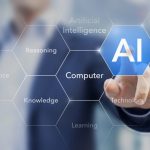AI and automation are top enterprise priorities

According to a new report from Digitate 90 percent of IT decision-makers plan to deploy more automation, including AI, in the next 12 months.
Based on a survey of 601 US-based IT decision-makers in organizations with more than 1,000 employees and conducted with Sapio Research, the study finds 26 percent of respondents plan to implement machine-operated tasks that require limited human input or fully transition to autonomous systems in the next five years.
36 percent of IT workers worry that AI will take their jobs

A new study finds that 36 percent of IT workers are very concerned that generative AI tools will take their jobs in the next five years, this is 17 points higher than for other office workers.
However, the report from Ivanti finds office workers are six times more likely to say that generative AI benefits employers than employees.
AWS launches its own thin client for enterprises

As more and more organizations turn to SaaS and cloud solutions, having a powerful PC as a desktop solution becomes hard to justify, not to mention the support and security issues that come along with it.
Step forward AWS with the launch of the Amazon WorkSpaces Thin Client, aimed at enterprise workers in order to reduce an employer's technology costs and provide enhanced security.
From castles to cities -- a modern approach to authorization [Q&A]

Corporate information security has traditionally used the 'castle' approach, using a strong boundary to keep everything secure.
But as we've moved to hybrid working and more sharing of information the castle is too restrictive and we've moved towards a 'city' model, allowing open routes to trade with assets widely distributed.
Stressed staff put enterprises at risk of cyberattack

A new survey from detection and response specialist Adarma reveals that organizations believe they are at significant risk of cyberattack due to stressed and exhausted staff.
The study of 500 cybersecurity professionals from UK organizations with over 2000 employees finds 51 percent believe their security operations staff are challenged, stressed, frustrated and/or exhausted, which could be putting businesses at risk.
Generative AI sees rapid adoption in the enterprise

Generative AI has seen rapid adoption in the enterprise with 67 percent of respondents to a new study reporting that their companies are currently using generative AI, and 38 percent of this group saying that their companies have been working with AI for less than a year.
The report from O'Reilly shows many are still in the early stages of the AI journey, however. 18 percent report having applications in production, but there are multiple bottlenecks for enterprises looking to implement these technologies. First is identifying appropriate use cases (53 percent), followed by legal issues, risk, and compliance (38 percent).
Enterprises lack in-house skills for generative AI adoption

Only 38 percent of executives say their organization has the in-house expertise to adopt generative AI for innovation, according to a new study from the IBM Institute for Business Value.
Generative AI promises to upgrade ecosystem innovation by transforming the entire workflow. A large majority of executives say generative AI will greatly improve ideation (80 percent), discovery (82 percent), collaboration with partners for innovation (77 percent), and innovation execution (74 percent).
Addressing the risks of using bulk remediation with Google Drive [Q&A]

Bulk remediation in Google Shared Drives can be useful in removing unneeded permissions, revoking expired access and ensuring that data remains secure.
But it can also present significant challenges due to the complex nature of managing permissions across a large number of files and users. Administrators face the difficulty of ensuring accurate and appropriate access levels for each file and user.
95 percent of security professionals worry about identity threats despite confidence in their solutions

A new study of IT and security leaders at 567 US-based enterprises finds over over 95 percent of respondents say they are gravely concerned about identity-related threats.
The report from Omada shows 72 percent say their organization's users have unnecessary access and overly permissive accounts.
90 percent of SMBs fear ransomware but 65 percent don't think they're a target

According to a new report, 90 percent of SMBs are extremely or somewhat concerned about a ransomware attack, yet 65 percent don't think or aren't sure that they're a ransomware target.
The latest Cybersecurity Global Ransomware Survey from OpenText show a similarity in how small-to-medium sized businesses (SMBs) and enterprises (more than 1,000 employees) think about ransomware attacks, including this disconnect about who is a target and growing concern about the use of AI by threat actors.
Only 14 percent of enterprises are ready for AI

New research from Cisco reveals that just 14 percent of organizations globally are fully prepared to deploy and leverage AI-powered technologies.
The company’s first AI Readiness Index surveyed over 8,000 global companies, and was developed in response to the accelerating adoption of AI, a generational shift that is impacting almost every area of business and daily life.
Organizations plan to use more AI in the next few years

A new survey from Snow Software reveals that 72 percent of IT leaders believe their organization will be using more AI in the next two to three years.
The poll of 800 IT leaders from the United States, United Kingdom, Germany and Australia set out to assess how IT decision makers' priorities have shifted over the past 12 months and outline their top areas of focus as they head into the new year.
Enterprises struggle with a changing security and compliance landscape

A new report from Vanta shows 67 percent of businesses say they need to improve security and compliance measures with 24 percent rating their organization's security and compliance strategy as reactive.
The expansion of attack surfaces in a post-pandemic hybrid world, combined with shrinking teams and budgets and the rapid rise of generative AI, are fueling an urgent need for companies to improve, and prove, their security posture.
Organizations turn to GenAI to combat downtime

Downtime-producing incidents such as application outages and service degradation are putting organizations at risk of losing up to $499,999 per hour on average, so it's no surprise they're turning to AI to help their responses.
A new State of DevOps Automation and AI report from Transposit shows 84.5 percent of respondents either believe AI can significantly streamline their incident management processes and improve overall efficiency or are excited about the opportunities AI presents for automating certain aspects of incident management.
Unauthorized apps put businesses at risk

The risks from shadow and unauthorized apps have been known for years, but new research from Armis finds employees of 67 percent of UK organizations are introducing risk to the business by downloading applications and software onto assets without the knowledge or management of IT or security teams.
In addition the study, carried out by Vanson Bourne, finds 39 percent of enterprises admit to feeling challenged by increasingly complicated regulations and governance requirements.
Recent Headlines
Most Commented Stories
BetaNews, your source for breaking tech news, reviews, and in-depth reporting since 1998.
© 1998-2025 BetaNews, Inc. All Rights Reserved. About Us - Privacy Policy - Cookie Policy - Sitemap.